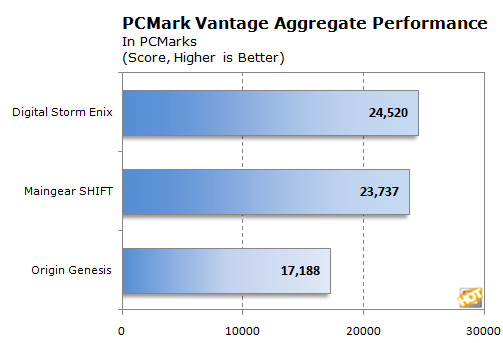Digital Storm's Enix Gaming System Reviewed
PCMark Vantage
Next, we ran the test systems through Futuremark’s PCMark Vantage. This benchmark suite runs through a host of different usage scenarios to simulate different types of workloads including High Definition digital video playback and editing, gaming, image editing and manipulation, music compression, communications, and productivity. We like the fact that most of the tests are multi-threaded as well, in order to exploit the additional resources offered by multi-core processors.
One thing to keep in mind when comparing PCMark Vantage results is that the benchmark's margin of error is fairly wide—we'd estimate 5-7 percent. Relevant factors include whether or not the hard drive was defragmented immediately prior to the run and whether Vantage was run immediately following OS+driver installation, or only after a full suite of tests and other benchmarks had been run.
 |
|







